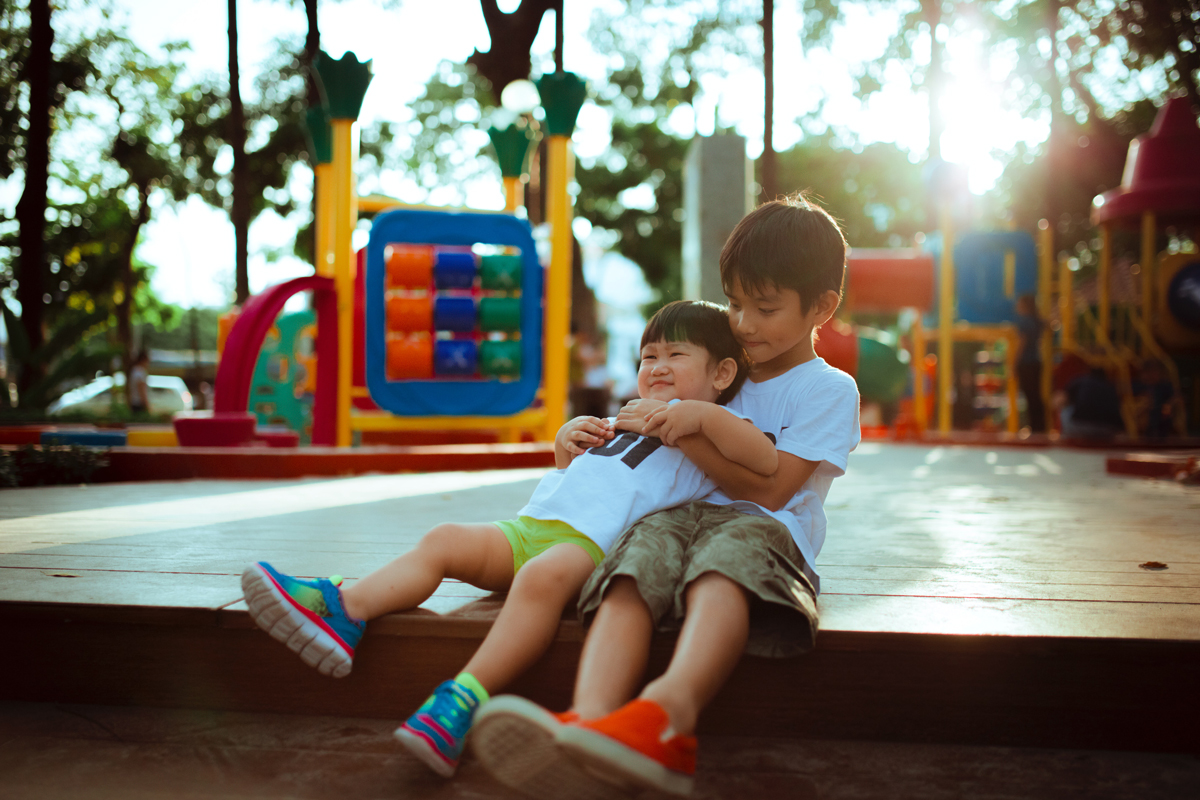 |
Children in this study who spent an additional 40 to 80 minutes outside each day had a lower incidence of myopia. Photo: Hisu lee on Unsplash. |
Once again, outdoor time has demonstrated a protective effect against childhood myopia, this time in a prospective study conducted at 24 primary schools in Shanghai. However, the researchers reported that the protective effect was not as strong as anticipated.
The study measured the cumulative two-year incidence of myopia among 6,295 children ages six to nine. The children were randomized by school to a control group (n=2,037), group one (n=2,329) and group two (n=1,929). Groups one and two received an additional 40 or 80 minutes of outdoor time each school day. The researchers measured light intensity and outdoor time duration using a wearable wrist device.
The two test groups had similar outdoor time and light intensity (approximately 127 minutes/day and 3,600 lux/minute, respectively) but significantly more than the control group, which had approximately 106 minutes/day and 2,984 lux/minute, respectively. Overall, the researchers noted that daily outdoor time was around 120 to 150 minutes at 5,000 lux/minute, or a cumulative outdoor light intensity of 600,000 to 750,000 lux, and significantly reduced by the incidence risk ratio by 17% to 31%.
The researchers also reported the two-year cumulative incidence of myopia as 25%, 21% and 24% for the control group, group one and group two, respectively. When compared with the control group, the adjusted incidences of myopia decreased by 16% and 11% in groups one and two, respectively. The researchers noted that the test groups demonstrated less myopic shift and axial elongation than the control group, though there was no significant difference between the adjusted incidences of myopia and myopic shift between the two test groups.
Though increased outdoor time reduced the risk of myopia onset and myopic shift, especially in nonmyopic children, the researchers reported a lower-than-expected effect of outdoor time. They wrote in their paper that this “may be related to the insufficient levels of outdoor time that were achieved in the test groups.” They stressed the importance of objective monitoring of outdoor time and light intensity and noted that any protective effect achieved is related to both. “The results also indicate that monitoring compliance is essential to affect the behavioral changes required to increase time outdoors,” they wrote.
He X, Sankaridurg P, Wang J, et al. Time outdoors in reducing myopia: a school-based cluster randomized trial with objective monitoring of outdoor time and light intensity. Ophthalmology. June 29, 2022. [Epub ahead of print]. |

